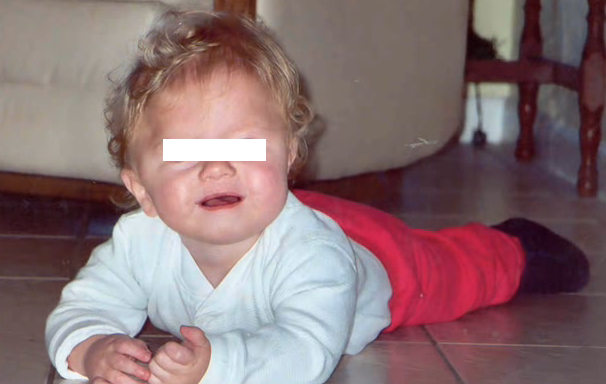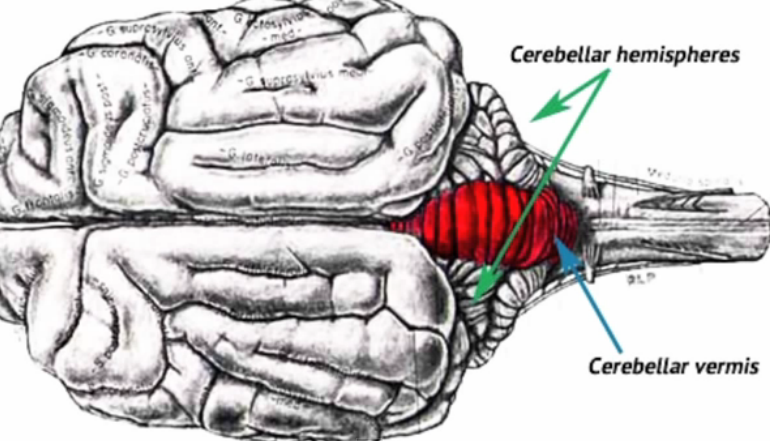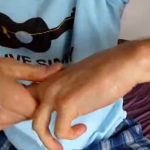Dandy Walker syndrome is a hereditary anomaly of the brain. It adversely influences the cerebellum and the gaps surrounding the cerebellum which is made up of fluid known as ‘cerebrospinal fluid’. The syndrome was named after the neurosurgeons Walter Dandy and Arthur Earl Walker.
Due to Dandy Walker syndrome, a part of the brain that lies in between the 2 hemisphere may not function partly or fully; also the fourth ventricle may bulge causing formation of cyst in the interior base portion of the brain. Hence, Dandy Walker syndrome is also called as ‘Dandy Walker cyst syndrome.’
Some other symptoms can be high blood supply pressure to the brain, shrinkage of gaps for holding fluids and/or excess accumulation of cerebrospinal fluid. Its occurrence is by chance and it is assumed that this may lead to many abnormalities of the central nervous system. Also this syndrome usually affects more women in comparison to men.
Symptoms
Dandy Walker syndrome symptoms may become visible little by little or quickly. Some of the signs and symptoms are listed below:
- Babies affected by Dandy Walker syndrome may elicit unusual behavioral patterns, accompanied with several disorders and hyperactivity.
- Malfunctioning of the cerebellum may cause anomalies like bulging of the skull; poor or absent coordination of muscles; irregular breathing pattern;involuntary movements of the limb, eyes, and face;general imbalance; and the size of the head increases considerably. These symptoms may affect the infants as well as the adult patients
- There can be other symptoms like decreased rate of motor development, increase in the size of the skull, and swelling of front fontanel, etc.
- Due to increased intracranial pressure the affected person may also suffer from vomiting, hyper-irritability, and seizures.
- Affected infants may also experience signs and symptoms which are not very common like vein clogging in the scalp, swelling of the optic disc, decrease in the occipital squama size, and disconnected cranial sutures.
If a person suffers from Dandy Walker syndrome along with other disorders then this can cause harm to the central nervous system and brain and the affected person may elicit more than the above given signs and symptoms.
Types of Dandy Walker syndrome
There are 3 types of Dandy Walker syndrome, as discussed below:
- Dandy Walker Malformation syndrome: This type features swelling of the posterior cranial fossa which consists of the brainstem and cerebellum.
- The cerebellar tentorium which divides the occipital lobes and cerebellum is elevated.
- Cerebellar vermis which forms the posterior midline portion in between the 2 hemispheres is fully absent or partly present in the basic type. This type of anomaly is a result of dysplasia, which affects the brainstem nuclei.
- Cysts can form in the 4th ventricle in the posterior fossa. This can cause development of hydrocephalus. Hydrocephalus leads to irregular grouping of cerebrospinal fluids in the ventricles and brain cavities. All this can gradually lead to excess intracranial pressure in the skull and other related disorders.
- Dandy Walker Variant syndrome: In this type of Dandy Walker syndrome the posterior fossa and the 4th ventricle bulges mildly.
- Reversal of the torcular-lamboid may not be experienced by the affected person
- Due to the disorder the affected individual may suffer from underdevelopment of the cerebellar vermis. This leads to abnormal signs associated with hydrocephalus or supratentorialcentral nervous system anomalies.
- Dandy Walker Cisterna Magna syndrome:In this type, the affected person may experience swelling of the posterior fossa by the side of the cavities in the meninges. This increases the compilation of the cerebrospinal fluids in the cistern magna of the posterior fossa.
Causes of Dandy Walker syndrome
- The real reason for Dandy Walker syndrome is unknown. It is assumed that the signs and symptoms linked with the syndrome occur due to hereditary and environmental factors.
- Anomalies of the chromosomes and additional hereditary abnormalities may damage the functions of cilia causing decrease in the signaling capability of the motor nerves.
- If a person suffers from hereditary problems like Myelomeningocele or/and Spina bifida, then it may also lead to Dandy Walker syndrome.
- The chances of developing this disorder increases if the fetus is exposed to several environmental features and viruses such as rubella, warfarin, toxoplasmosis, and cytomegalovirus.
- A number of anomalies of the central nervous system and the brain may also lead to development of Dandy Walker syndrome signs and symptoms.
Treatment of Dandy Walker syndrome
The goal of the treatment of Dandy Walker syndrome is to correct the signs and symptoms linked with the syndrome. Some of the ways to treat this disorder are as follows:
- Medicines and drugs are taken to manage seizures and other additional symptoms
- Therapies like vision therapy, speech therapy, occupational therapy and physical therapy can be used to lessen the level of defects caused due to Dandy Walker symptoms.
- A treatment method called as shunting can be used to lessen the intracranial pressure. In this a special tube is inserted in the skull to shunt the posterior fossa cyst. It also helps avoid the additional buildup of cerebrospinal fluids, and facilitates its smoother flow.
- Abnormalities of ventriculoperitoneal are treated through shunting of the lateral ventricles. This reduces the swelling of the various portions of the brain.
Dandy Walker Syndrome Pictures






